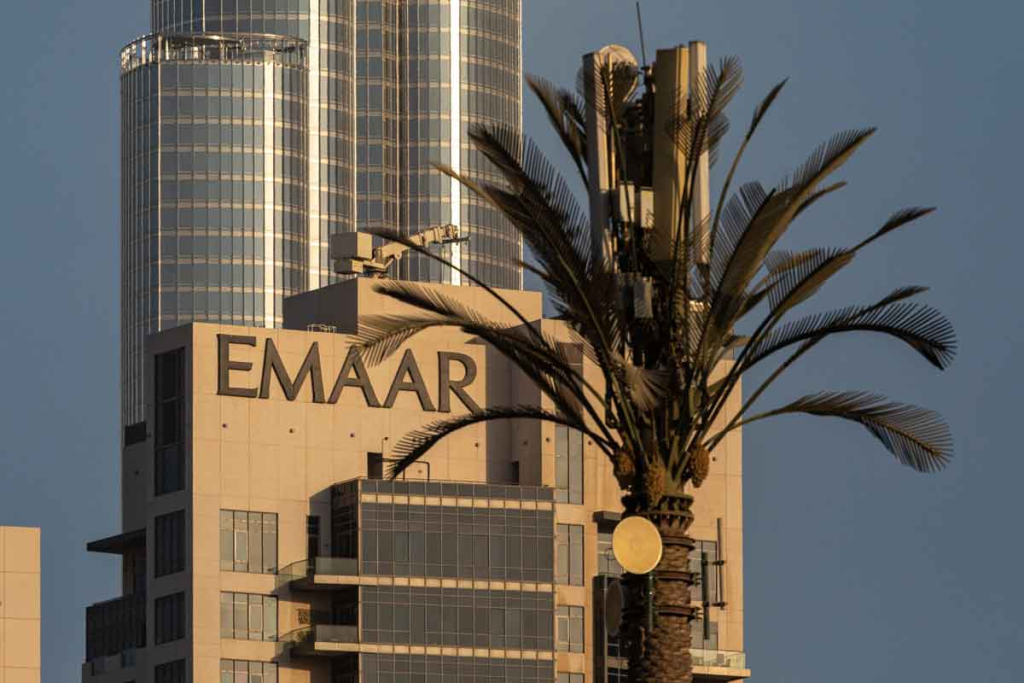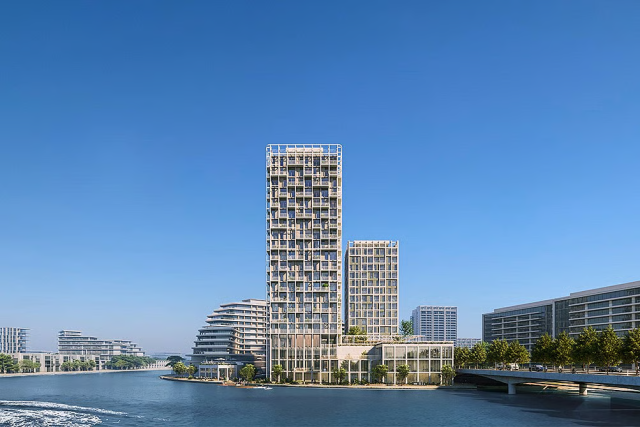Background: What’s The Story So Far

Emaar Properties, one of Dubai’s leading real estate developers, has long had substantial exposure to India through its subsidiary, Emaar India. This includes residential and commercial developments in several cities (Gurugram, Mohali, Lucknow, Jaipur, Indore among them) and land holdings therein.
In early 2025, media reports began circulating that Emaar was in discussions with multiple Indian groups—including the Adani Group—about the possibility of selling a stake, or perhaps even selling the Indian arm outright.
Valuations quoted in these reports ranged up to USD $1.4‑1.5 billion for the Indian operations as a whole. But crucially, Emaar in its regulatory filings repeatedly flagged that the talk was at an early stage. The terms, valuation, share of control, etc., had not been finalized.
Then, by mid‑2025, reports emerged that talks had stalled (or even ceased), particularly because of valuation gaps between what Emaar wanted and what potential partners were willing to pay.
Most recently, Emaar has reportedly made clear that it is no longer considering selling its Indian entity. It is still, however, exploring joint venture possibilities and local partnerships, rather than an outright sale.
Why the U‑Turn? What Might Be Driving Emaar’s Decision

Several factors likely contributed to Emaar deciding not to sell, or at least not to commit to a sale of its Indian business. Understanding these helps see what this means, both for Emaar itself and for the wider real estate/investment environment.
- Valuation disagreement
- As earlier reports showed, potential buyers like Adani and others were pushing for a lower enterprise value than Emaar deemed acceptable. These gaps can be deal‐breakers.
- The cost of under‐valuing a strategic asset, especially one with growth potential, might have made Emaar less willing to compromise.
- Strong financial performance / confidence
- Emaar has been performing well recently. With surging profits, strong property sales in Dubai, and an increase in its international land bank, the company might feel less pressure to divest.
- If Emaar believes the Indian market will deliver more value over time (e.g. from rising real estate prices, urbanization, demand for housing/office/commercial space), then holding on might promise greater returns than a sale now.
- Strategic shifts: preference for partnerships over full sale
- The latest reports suggest that instead of an outright sale, Emaar is more interested in joint ventures or local partners.
- Partnering allows sharing risk, maintaining some ownership (and upside), and leveraging local strengths. For Emaar, local partners may help with regulatory navigation, land acquisition, local market knowledge, etc.
- Regulatory / political / market risks in India
- China’s experience and India’s regulatory environment have shown that foreign real estate developers often face policy, land title, planning & permit issues, and fluctuating real estate demand. While India has been fairly open in recent years, there is always uncertainty.
- Also, the financing environment, costs of raw materials, local labour, and competition can compress margins. Emaar may have interpreted recent signals (e.g. valuation expectations, buyer caution) as indicating that divestment would not reliably yield the premium payoff it previously hoped for.
- Alternative uses of capital and priorities
- Emaar has been looking to expand and acquire in “big markets.” According to recent statements, instead of selling India operations, the company is focusing on securing partners there and using its financial strength to explore M&A (mergers & acquisitions) in other geographies.
- There might also be tax, currency, or capital repatriation considerations, which make a sale more complex or less attractive.
What Does This Mean: Implications for Stakeholders

Emaar’s announcement and change of course has several implications—some positive, some that pose new challenges.
- For Emaar
- Opportunity cost: By not selling, Emaar retains exposure to India. If the Indian market grows strongly (as many predict it will), Emaar can benefit from that growth directly, rather than being a passive investor or having limited upside via a sale.
- Risk retention: But with ownership comes exposure—to market cycles, regulatory risk, possible cost overruns, and delays. If India’s real estate market slows down (or costs rise significantly), Emaar bears that risk.
- Flexibility: Joint ventures/local partnerships give Emaar strategic flexibility: keep projects, reduce financial burden, share risk, but still retain presence.
- For Potential Partners / Investors (including Adani, local developers, financiers)
- Negotiation leverage: Emaar’s posture suggests it is not desperate to sell; thus, potential buyers may have to accede to higher prices or better terms to meet Emaar’s threshold.
- Partnership opportunities: Local developers may find more opportunity in partnering rather than acquiring outright. This may lead to co‐development models or shared risk ventures.
- For India’s Real Estate Market
- Signal of confidence: A major player like Emaar holding or doubling down in India sends a signal that international developers still see India as a promising market.
- Impact on valuation norms: Observers and smaller developers will watch what Emaar considers a good valuation. That can influence pricing expectations in the broader market. If Emaar holds out for premium prices, that elevates perceived worth of comparable land / projects.
- Regulatory & policy watch: Since such deals often trigger scrutiny (foreign ownership, land transfer, taxation), governments may pay attention to ensure policies stay favorable for investment.
- For Adani / Other Potential Buyers
- Need to adjust expectations: Given valuation gaps and Emaar’s willingness to retain control, suitors like Adani may have to re‑evaluate how much they are willing to spend, or accept minority stake roles.
- Strategic delay: They may postpone acquisitions or scale them back unless terms become more favorable. They may shift focus to joint ventures over acquisition.
Key Takeaways
- No sale doesn’t mean no possibility of change. Emaar has made clear it is not selling now. But it is still exploring local partnerships, joint ventures, etc. So change is still possible, just not sale‐centric.
- Valuation is crucial. The sticking point in many M&A / stake sale negotiations—especially cross‑border—is always how buyer and seller value the assets, future prospective profits, risk, etc. Emaar’s stance suggests their valuation expectations are higher than what was being offered.
- Long‑term play: For Emaar, this seems like a long‑game decision: preserving optionality and upside rather than locking in current value.
- Investor sentiment matters: Such statements can affect share prices, perceptions in both Indian and UAE markets. For example, buyers might be less confident of quick exits or dividends unless partnerships are firmed up.
What to Watch Next

To see how things evolve, you may want to track:
- Updates from Emaar’s management / regulatory filings: Any change in wording (e.g. “no longer considering any sale or stake sale”) would be significant.
- Details of any joint ventures or partnerships announced: Who the partner is, what share Emaar gives up or retains, how control is shared, who funds what, etc.
- India’s real estate market indicators: Land prices, demand‐supply, regulatory changes, tax / foreign investment policy. If the environment improves (or shows high risk), that might push Emaar to reconsider.
- How potential buyers respond: Are groups like Adani still interested? Do new suitors emerge? Perhaps buyers with different valuation expectations or financial structures will come in.
- Comparisons with other international developers’ behavior: Are other foreign players selling off in India, or holding on / expanding? That will give context: is this a trend of caution, or is Emaar anomalous?
- Macro‑economic factors: Interest rates, inflation, construction costs, foreign currency rates (if repatriation of capital or profits is involved), government policies (housing subsidies, infrastructure development).
Conclusion
Emaar’s recent statement that it is no longer considering a sale of its Indian entity marks a significant pivot from earlier in 2025, when stake sale talks (notably including with the Adani Group) were prominent in media reports. The company appears to be shifting from exploring an outright sell‑off to focusing on joint ventures, partnerships, and retaining its stake in India—while being mindful of valuation, risk, and long‑term growth potential.
For many stakeholders—investors, analysts, local developers, policy makers—this decision will be watched closely. It sets a benchmark for what Emaar considers acceptable value, and signals its belief that the Indian real estate market still has enough promise to warrant continued participation, even amid competitive and regulatory headwinds.





Leave a Reply